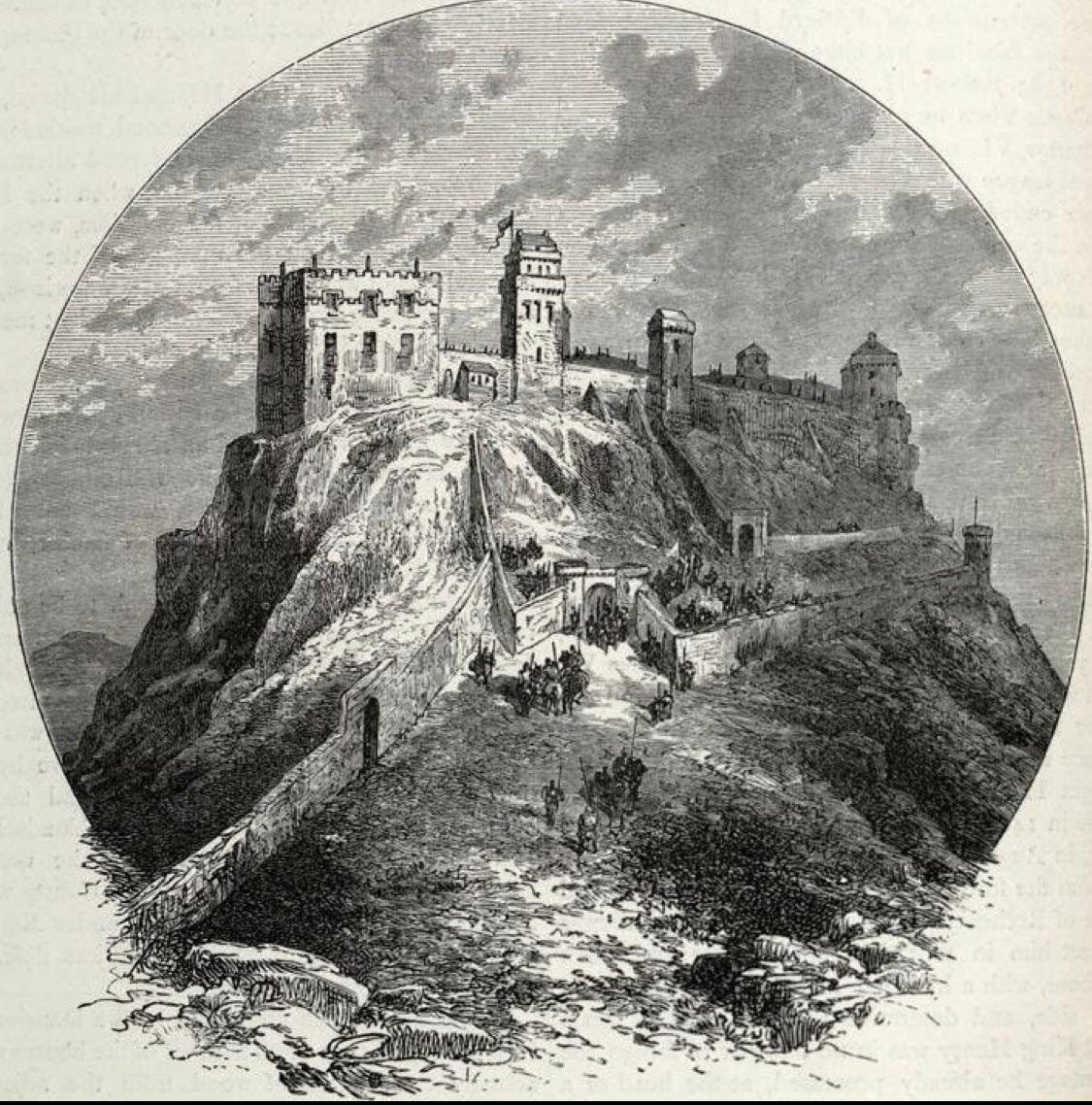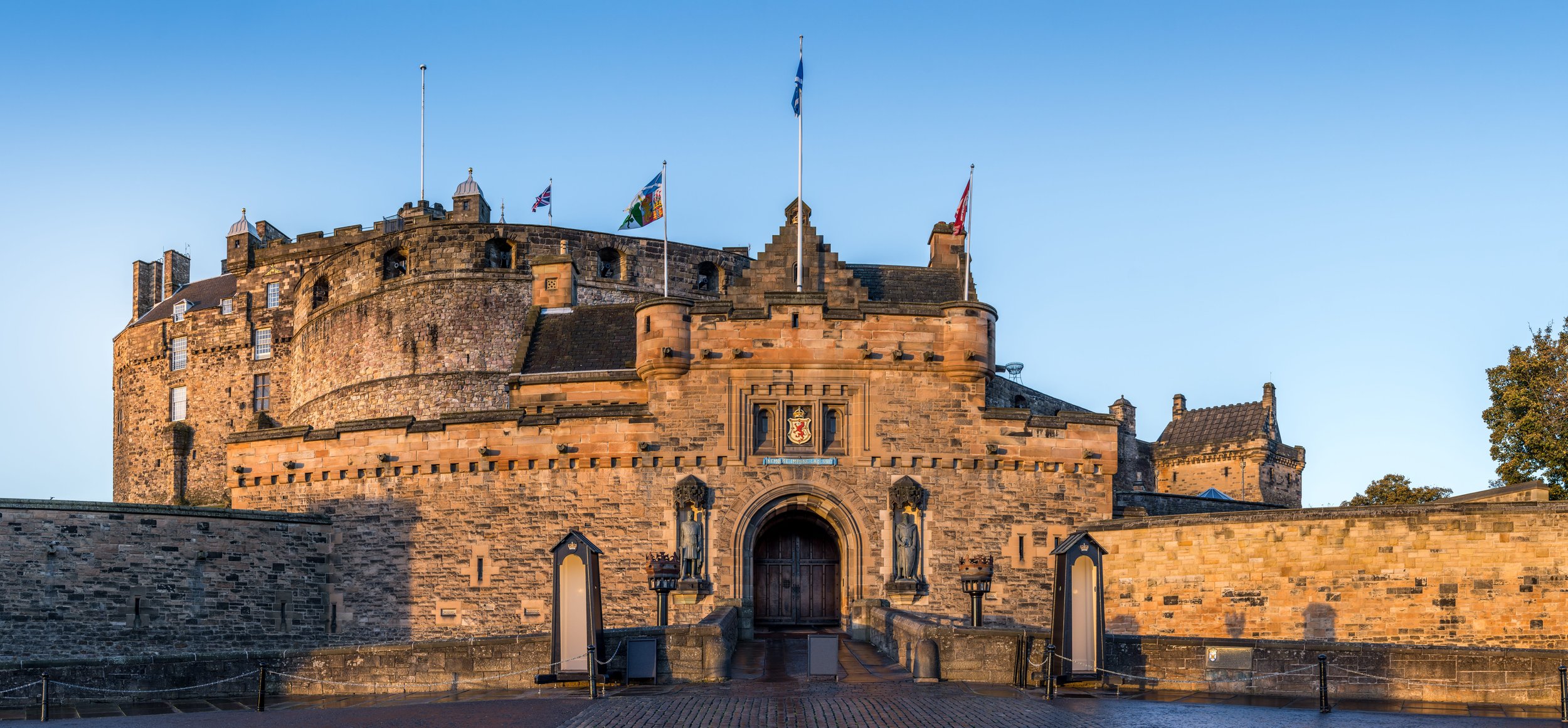Edinburgh Castle, Scotland 🏴
Towering 430ft (131m) above sea level ‘Castle Rock’ the site of Edinburgh Castle has been occupied since the Bronze Age with excavations showing activity on the cliff top from 900 BC.
Around 600 AD the Celtic tribe Votadini defended their hilltop fort at this site until they were defeated by the Angles as described in this 7th century Welsh poem.
Y Goddodin
A 7th century Old Welsh poem Y Goddodin tells a tale of the Goddodin (known to the Romans as the Votadini) and their year-long feast at 'Din Eidyn' preparing for battle. After the defeat of the Goddodin at the hands of the Angles, the name of the hillfort was anglicized to Edinburgh.
Not much is known about Edinburgh Castle during the early Middle Ages until the reign of Scottish King Malcolm III (who avenged his father by killing Macbeth) and his sons who developed the site into a royal center.
In 1130 the youngest son of Malcolm III, David I built a chapel to honor his late mother the former Queen Margaret. The Chapel of Saint Margaret is the oldest remaining part of the original fortress at Edinburgh Castle. The well of the chapel was later poisoned during the Lang Siege of the 16th century.
In 1296 King Edward I invaded Scotland.
The castle fell and the Stone of Destiny was taken from Scotland and brought to Westminster Abbey. This stone was used in coronations of Scottish monarchs for centuries, maybe as early as the fifth century.
The legend says that where the Stone of Destiny lies is where Scottish Kings rule.
This held true when James Stuart became both King James VI of Scotland and James I of England. The stone was returned to Scotland 700 years later (in 1996) and now resides in Edinburgh Castle. It’s still used for coronations today (like for King Charles III coronation on May 6th, 2023).
Edinburgh Castle as it may have looked before the Lang Siege of 1571–73, with David's Tower and the Palace block, centre and left — Public Domain
11 years after his invasion, King Edward I died and the English hold on the castle weakened.
In 1314 Thomas Randolph (nephew of Robert the Bruce) led a surprise night attack and recaptured the Edinburgh Castle by scaling the cliff walls of Castle Rock. Once the castle was controlled again by the Scottish, King Robert the Bruce ordered the demolition of the castle to prevent the English from capturing it. After Bruce's death, the castle ruins were captured again by the English in 1335.
Edinburgh Castle as it may have looked before the Lang Siege of 1571–73, with David's Tower and the Palace block, centre and left — Public Domain
However, in 1341 a small group of Scottish men disguised as merchants blocked the castle gates open and retook the castle, killing the 100 English men inside.
Robert the Bruce's son and successor King David II began rebuilding the castle and he commissioned David's Tower.
In 1440, David's Tower was the site of the 'Black Dinner'.
The Black Dinner
Two young heirs to the powerful Douglas Clan were cordially invited to Edinburgh Castle. During dinner they were presented with a bull’s head on a platter. This signaled that the boys were to be taken away and executed.The young heirs were executed in front of then 10 year old King James II.
Edinburgh castle faced retaliation from the Douglas Clan and incurred subsequent damages. The infamous 'Black Dinner' partly inspired the Red Wedding in the Game of Thrones series.
The Lang Siege (1571-3) took place at Edinburgh Castle when Mary Queen of Scots forced abdication caused civil unrest. 1,000 English Troops, 27 cannons, and 3000 shots were fired at the castle. David's Tower collapsed. Jewelers minting coins in Mary's honor were hanged.
Edinburgh Castle front gate — Adobe Stock
Much of the castle was rebuilt including the Half Moon Battery to replace David's Tower.
In the 17th and 18th centuries, Edinburgh castle was a prison for war captives from Jacobite rebels, pirates of the Caribbean, and Americans fighting in the War of Independence.
Edinburgh Castle has remained a defensible position as it’s one of the most besieged places in the world. A previous home of royals, army headquarters and now a national icon, Edinburgh Castle is steeped in history.
During the time when the oldest surviving part of Edinburgh Castle was just being built King David I was also dedicating an abbey which brings us to our next building.




